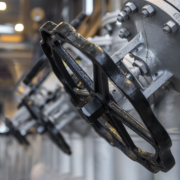FAQ – Extinguishing of fires caused by the heater
What do I have to observe for fires caused by the heater and how to proceed best?
In this FAQ area, you will find some general questions and answers on and around the topic of fires caused by the heater, what are their characteristics, which extinguishing methods are provided and how can I protect myself. Furthermore, we describe the advantages of a distinguishing system.
Why is a distinguishing system reasonable for the heater?
In heat transfer oil systems, heat transfer oil is used above its flashpoint. If oil escapes unintendedly – for instance through a leakage in the tube spiral of the heater – oil can ignite on a hot surface. If ignite once, a big fire can develop, depending on how much oxygen and heat transfer oil is in the vicinity.

Back to Index
Which type of firefighting is available?
There are two effective types for distinguishing a fire: Either with inert gas, e.g. argon, or with water mist. In the two variants, oxygen is withdrawn from the fire to extinguish it.
Back to Index
What is the difference between the types of extinguishing?
The extinguishing method with inert gas flushes the heater chamber with the gas. The inert gas displaces oxygen and the fire goes out. It must be ensured that enough inert gas is available to fill the whole heater.
The extinguishing method with water mist, beside the displacement of oxygen, the hot surfaces are cooled additionally. This has the advantage of inhibiting a new ignition the oil after the extinguishing process.
Back to Index
Can I retrofit an extinguishing system to my heater, if there is none?
Mostly, NESS heaters already include the possibility for integration or retrofitting for the two extinguishing systems and the respective connecting points are provided. If you are not sure, certainly we would be happy to check the integration possibility for you.

Back to Index
Other FAQ topics that might interest you
NESS NEA / NEWM
Fire extinguishing system NEA / NEWM
for fighting against fires in heaters











